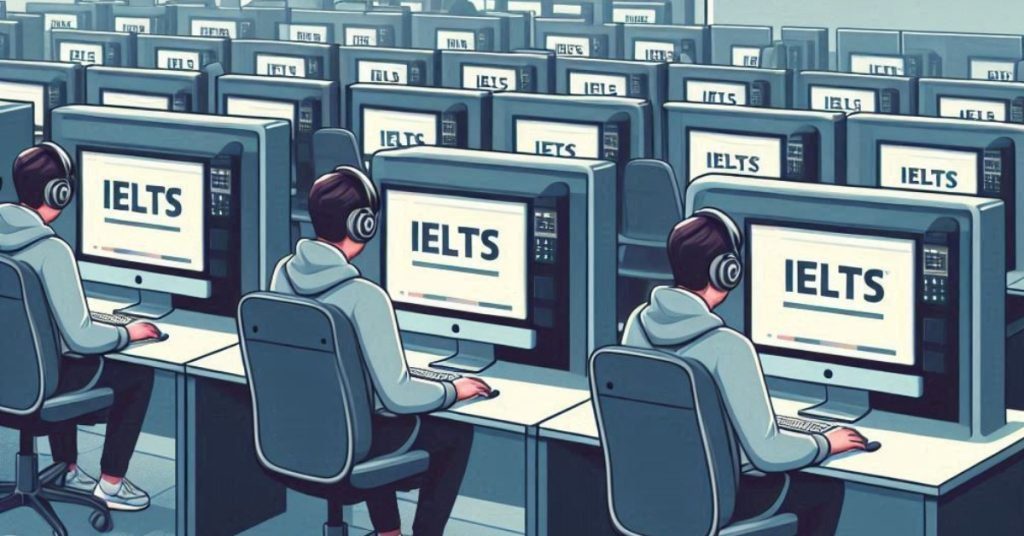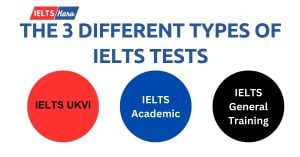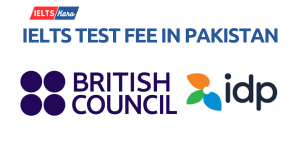Introduction
The IELTS syllabus is different than the typical syllabus and course curriculum that we get while studying at a high school, college or university. IELTS, unlike other tests, does not really have a syllabus. But that doesn’t mean you can’t have a basic structure to follow and prepare for the test.
The International English Language Testing System (IELTS) is a crucial step for non-native English speakers aiming to study, work, or live in English-speaking countries. Understanding the IELTS syllabus is important for candidates to achieve their desired score and fulfill their dreams. This detailed guide provides a comprehensive overview of the IELTS syllabus, helping you navigate each section with confidence and clarity. Without further ado, let’s get started.
Understanding the IELTS Syllabus and Exam Structure
The IELTS exam is divided into four main sections:
Listening, Reading, Writing, and Speaking
Each section assesses different language skills and contributes to your overall band score, which ranges from 0 to 9. Then, the average of all these four modules generates an overall band score.
The Four Sections: Listening, Reading, Writing, and Speaking
- Listening: 30 minutes, 4 section, 40 questions
- Reading: 60 minutes, 3 sections, 40 questions
- Writing: 60 minutes, 2 tasks
- Speaking: 11-14 minutes, 3 parts
Listening Section (I got an 8.5 in Listening)
Overview of the Listening Syllabus
The Listening section tests your ability to understand spoken English in various contexts. You will listen to four recordings and answer 40 questions. For IELTS on Computer, you will get an additional 2 minutes at the end of the test, whereas for paper-based test, an additional 10 minutes of time will be provided to transfer the answers from the question paper to the answer sheet.
Note: The recording is played once only, and cannot be stopped. There are no controls to start or rewind the recording, hence you need to answer all questions as you hear the recording, and not afterwards.
Types of Questions
- Multiple Choice
- Matching
- Plan/Map/Diagram Labeling
- Form/Note/Table/Flow-Chart/Summary Completion
- Sentence Completion
Tips for Success in the Listening Section
- Practice active listening with a variety of English accents.
- Familiarize yourself with different question types.
- Develop effective note-taking skills.
- Always answer questions as you hear the recording.
- Before and after every section, you will be given some time to read the next set of questions.
Detailed Breakdown of Listening Section
Part 1: Social Needs
You’ll hear a conversation between two people in a social context. The questions will focus on factual information.
Part 2: Speech in an Everyday Context
This part involves a monologue set in an everyday social context, such as a speech about local facilities.
Part 3: Educational or Training Context
You’ll listen to a conversation between up to four people in an educational or training context.
Part 4: Academic Lecture or Talk
This is a monologue on an academic subject. The questions will test your understanding of the main ideas and specific details.
Reading Section (I got an 8.5 in Reading)
Overview of the Reading Syllabus
The Reading section assesses your reading comprehension skills. It consists of three long texts, with a total of 40 questions. The test is divided in 3 sections.
Academic vs. General Training Reading
- Academic Reading: Texts are taken from books, journals, magazines, and newspapers.
- General Training Reading: Texts are from books, magazines, newspapers, notices, advertisements, company handbooks, and guidelines.
Types of Questions
- Multiple Choice
- Identifying Information
- Identifying Writer’s Views/Claims
- Matching Information
- Matching Headings
- Matching Features
- Matching Sentence Endings
- Sentence Completion
- Summary/Note/Table/Flow-Chart Completion
- Diagram Label Completion
- Short-Answer Questions
Strategies for Tackling the Reading Section
- Skim and scan the texts for main ideas and details.
- Practice reading under timed conditions.
- Develop your vocabulary and understanding of complex sentence structures.
- Always do the easier ones first as you are allowed to answer the questions in any order.
Detailed Breakdown of Reading Section
Types of Texts in Academic Reading
- Descriptive and factual texts
- Discursive and argumentative texts
Types of Texts in General Training Reading
- Extracts from books, magazines, and newspapers
- Advertisements, notices, and company handbooks
Specific Question Types and How to Approach Them
- Matching Headings: Identify the main idea of each paragraph.
- True/False/Not Given: Determine if the information is correct, incorrect, or not mentioned.
- Multiple Choice: Select the best answer from the options provided.
Writing Section (I ALSO got an 8.5 in writing!)
Overview of the Writing Syllabus
The Writing section consists of two tasks: Task 1 and Task 2. You need to complete both tasks in 60 minutes. Task 1 requires minimum 150 words, whereas Task 2 requires no less than 250 words.
Task 1: Academic and General Training Differences
- Academic: Describe visual information (graphs, charts, diagrams).
- General Training: Write a letter (formal, semi-formal, or informal).
Task 2: Essay Writing
Task 2 is an essay on a given topic. You need to present an argument or discuss an issue with relevant examples to boost your score. The writing style is formal.
Tips for Excelling in the Writing Section
- Practice writing within the word limit and time constraints.
- Organize your essays with clear introductions, body paragraphs, and conclusions.
- Focus on clarity, coherence, and variety in sentence structure.
- Study some books and practice only using authentic IELTS resources such as Cambridge Test Books, British Council and IDP website.
Detailed Breakdown of Writing Section
Task 1: Describing Graphs, Charts, and Processes (Academic)
Focus on describing trends, comparing data, and explaining processes clearly and accurately.
Task 1: Writing Letters (General Training)
Depending on the prompt, you may need to write a formal, semi-formal, or informal letter. Pay attention to the tone and purpose of your letter.
Task 2: Argumentative Essay Writing Tips
- Plan your essay before you start writing.
- Use a clear structure with an introduction, body paragraphs, and a conclusion.
- Support your arguments with examples and evidence.
Speaking Section (I got a 7.5 in this)
Overview of the Speaking Section
The Speaking section tests your spoken English in a face-to-face interview with an examiner. It lasts 11-14 minutes and is divided into three parts. It can be over a webcam through video link, or with in a face-to-face environment.
Format of the Speaking Test
- Part 1: Introduction and Interview
- Part 2: Long Turn (you get a cue card, and 1 minute of time to prepare, and then speak for 1-2 minutes on a given topic)
- Part 3: Discussion (two-way discussion on more abstract topics)
Common Topics and Questions
- Personal Information
- Daily Activities
- Hobbies and Interests
- Education and Career
- Social Issues
Tips for a Confident Performance
- Practice speaking English regularly with friends or tutors.
- Record yourself to identify areas for improvement.
- Stay calm and focused during the test.
Detailed Breakdown of Speaking Section
Part 1: Introduction and Interview
You’ll answer questions about yourself and familiar topics.
Part 2: Long Turn
You’ll be given a topic and have 1 minute to prepare. Then, you’ll speak for 1-2 minutes.
Part 3: Discussion
This part involves a deeper discussion related to the topic in Part 2. The examiner will ask more abstract questions.
Common Challenges and How to Overcome Them
Listening Challenges
- Accents: Practice listening to different English accents.
- Fast Speech: Improve your note-taking skills to capture key points.
Reading Challenges
- Complex Texts: Build your vocabulary and reading skills.
- Time Management: Practice reading under timed conditions.
Writing Challenges
- Idea Generation: Brainstorm and outline your essays before writing.
- Language Use: Focus on grammar, vocabulary, and sentence structure.
Speaking Challenges
- Nervousness: Practice speaking regularly to build confidence.
- Fluency: Engage in conversations and record yourself to improve.
Effective Study Strategies
Creating a Study Plan
- Set clear goals and deadlines.
- Break down your study sessions into manageable chunks.
Utilizing Practice Tests
- Take regular practice tests to assess your progress.
- Review your answers and learn from your mistakes.
Joining Study Groups
- Collaborate with peers to share tips and resources.
- Practice speaking and writing together.
Resources for IELTS Preparation
Recommended Books
- The Official Cambridge Guide to IELTS
- IELTS Practice Tests Plus
Online Resources
IELTS Preparation Courses
- Enroll in an IELTS preparation course for structured learning and expert guidance.
Test Day Tips
If you need some tips on how to overcome your anxiety on the test day, here are some 7 IELTS Test Day Tips.
What to Bring
- Valid identification
- Pens, pencils, and erasers
- Water bottle (if allowed)
How to Stay Calm and Focused
- Arrive early to avoid last-minute stress.
- Practice deep breathing exercises.
Managing Your Time Effectively
- Keep track of time for each section.
- Move on to the next question if you’re stuck.
Conclusion
Understanding the IELTS syllabus is the first step towards achieving your desired band score. With diligent preparation, effective strategies, and the right resources, you can ace the IELTS exam. Good luck!
FAQs
Are there any IELTS syllabus books to prepare for the exam?
There are no particular IELTS syllabus books, but there are official Cambridge test books from 10 to 18 for Academic and General Training. The tests in those books are authentic, reliable and mimic the actual IELTS tests. Use them to prepare for the exam
Is IELTS Syllabus 2024 The Same for All Years?
Despite going strong for over 35 years, there really hasn’t much changed and the IELTS syllabus 2024 is the same as it was decades ago. The format for all modules has not changed, in fact it has improved and become slightly easier rather than becoming more difficult.
How long does it take to prepare for the IELTS?
The preparation time varies depending on your current level of English proficiency. On average, it can take 2-3 months of consistent study to be well-prepared.
What is the best way to practice speaking for the IELTS?
The best way to practice speaking is to engage in regular conversations with native speakers or use language exchange platforms. Additionally, recording yourself and reviewing your performance can help identify areas for improvement.
Can I use British or American English in the IELTS exam?
Yes, you can use either British or American English in the IELTS exam. However, it’s important to be consistent throughout your test. Use one English standard and use it without changing.
How is the IELTS scored?
The IELTS is scored on a nine-band scale, with each band corresponding to a specific level of English proficiency. The overall score is an average of the four sections: Listening, Reading, Writing, and Speaking.
What if I don’t achieve my desired band score?
If you don’t achieve your desired band score, you can retake the IELTS exam. It’s important to analyze your performance, identify areas for improvement, and focus on those areas in your subsequent preparation. Do not reappear without preparing yourself.





